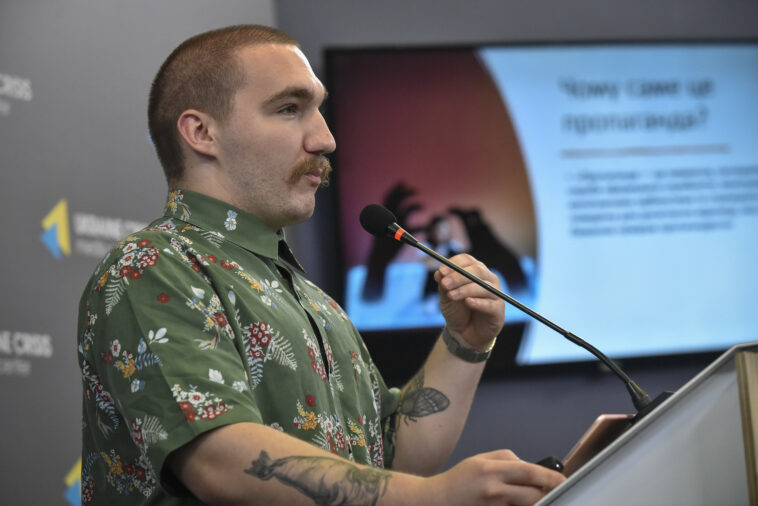Manipulation through the use of children in Russian propaganda is a tactic that exploits emotional vulnerability and innocence. Anton Kimiak, an analyst with the Hybrid Warfare Team at UCMC, presents his research on how Russian propaganda uses Children in its discourse.
During the presentation of his investigation on Russian propaganda’s use of children, Anton emphasizes that children are reliable figures and a group that must be prioritized and protected, making them an easy target for the Russian propaganda discourse.
He told how Russian propagandists understand the emotional impact of the “children narrative” and employs it strategically to not only sway public opinion but as a tool to calm the information space when profitable to them. By pulling the lever of children and all they represent—hopes and dreams for a better future, honesty, and vulnerability—they deflect attention away from the actual issues at hand, thereby effectively controlling the discourse.
Providing deeper studies on this theme gives a more complex understanding of how to tackle disinformation and can be used to shape state policy in this field
Anton Kimiak, HWAG analyst
Anton reveals the extent to which Russian propaganda during the occupation of Donbas has targeted children. He describes how the narrative portrays Ukraine as a source of contention, fostering an atmosphere of perpetual conflict. The effect of such indoctrination on the children of Donbas not only hinders reconciliation efforts, but also poses long-term challenges to rebuilding trust and fostering unity among Ukrainians after their de-occupation.
While Anton asserts that the Ukrainian information space cannot compete with Russia’s and that there is little opportunity to penetrate the long-established propaganda machine, proactive measures can be taken to protect Ukraine from Russian propaganda.
Read our analysis in full here

